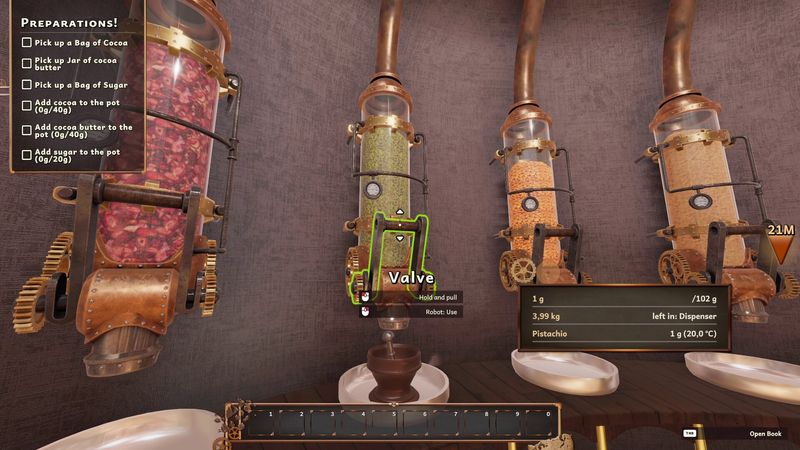 Hey everyone, let’s talk Chocolate Factory Simulator by Games Incubator, which also acts as the publisher. What stood out most to me were the sharp controls and gear-driven puzzles. On Steam, players often mention the steampunk style and calming workflow. One reviewer even called it “calming busyness,” which fits my own style of mastering mechanics. The tutorial feels a little unclear, but the game’s promise is strong. As a fighting game veteran, I value quick feedback, and each machine feels unique once Nougat—the automaton helper—gets upgrades.
Hey everyone, let’s talk Chocolate Factory Simulator by Games Incubator, which also acts as the publisher. What stood out most to me were the sharp controls and gear-driven puzzles. On Steam, players often mention the steampunk style and calming workflow. One reviewer even called it “calming busyness,” which fits my own style of mastering mechanics. The tutorial feels a little unclear, but the game’s promise is strong. As a fighting game veteran, I value quick feedback, and each machine feels unique once Nougat—the automaton helper—gets upgrades.
 From the start, the feel struck me as both creative and flexible. Games Incubator tuned Unity for open play, letting you explore order queues with either timed runs or relaxed jobs. This sense of choice makes the workshop feel open-world. While some players say the gameplay grows samey, secret recipe booklets hidden in corners push you to explore. In many ways, these finds reminded me of Subnautica’s hidden lore, rewarding curiosity with depth.
From the start, the feel struck me as both creative and flexible. Games Incubator tuned Unity for open play, letting you explore order queues with either timed runs or relaxed jobs. This sense of choice makes the workshop feel open-world. While some players say the gameplay grows samey, secret recipe booklets hidden in corners push you to explore. In many ways, these finds reminded me of Subnautica’s hidden lore, rewarding curiosity with depth.
 Exploring every blueprint became a challenge I couldn’t walk away from. So far, I’ve found 50 recipe variants, with developers teasing 30 more in a future update. Beyond recipes, requests like having the decoration machine remember its last design are already planned in patches. I also mapped each level, tracked Nougat’s upgrade paths, and logged side quests from wandering customers. These layers give a strong sense of growth and replay.
Exploring every blueprint became a challenge I couldn’t walk away from. So far, I’ve found 50 recipe variants, with developers teasing 30 more in a future update. Beyond recipes, requests like having the decoration machine remember its last design are already planned in patches. I also mapped each level, tracked Nougat’s upgrade paths, and logged side quests from wandering customers. These layers give a strong sense of growth and replay.
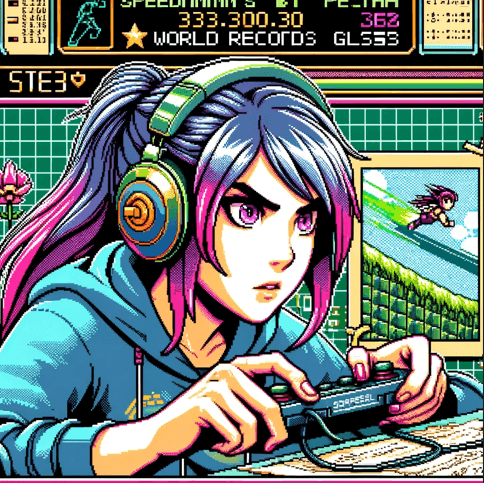 For players like me, speed is part of the fun. My prologue runs hit 12 minutes, thanks to a shortcut: feeding the melanger twice before tempering. That trick saves about ten seconds per batch. Testing task stacking and timing tweaks made runs feel rewarding. Some reviewers didn’t get the melanger’s use; but when done right, it’s a big time-saver. This makes the game shine for speedrunners, almost echoing Metroid Prime’s sequence-breaking tricks.
For players like me, speed is part of the fun. My prologue runs hit 12 minutes, thanks to a shortcut: feeding the melanger twice before tempering. That trick saves about ten seconds per batch. Testing task stacking and timing tweaks made runs feel rewarding. Some reviewers didn’t get the melanger’s use; but when done right, it’s a big time-saver. This makes the game shine for speedrunners, almost echoing Metroid Prime’s sequence-breaking tricks.
 At its core, the loop mixes timed ingredient drops with conveyor bots, putting the sim in steampunk land. Upgrades like Nougat’s faster arm speed or bigger pot size recall Factorio’s automation, but with a sweeter twist.
At its core, the loop mixes timed ingredient drops with conveyor bots, putting the sim in steampunk land. Upgrades like Nougat’s faster arm speed or bigger pot size recall Factorio’s automation, but with a sweeter twist.
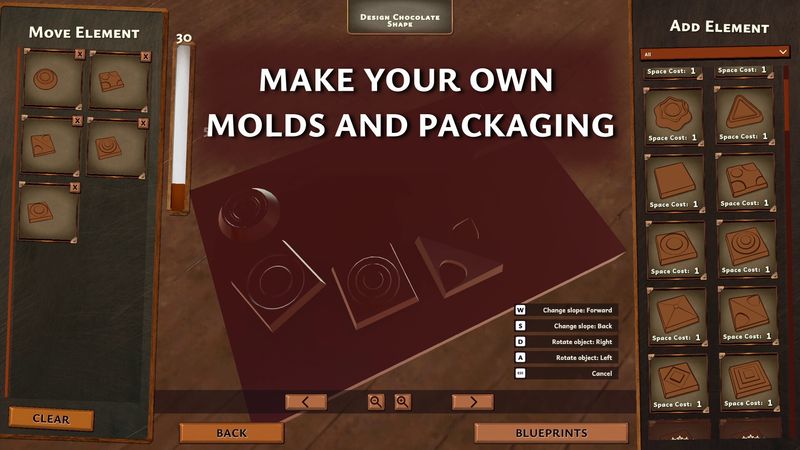
 Order choice feels like questing. You might pick a long, easy run or jump into a fast, timed order. This freedom mirrors the open-world design I enjoy.
Order choice feels like questing. You might pick a long, easy run or jump into a fast, timed order. This freedom mirrors the open-world design I enjoy.
 Machines—melanger, temperer, and decorator—need careful timing. I logged each window, and the results looked like guides on Arqade that show exploits.
Machines—melanger, temperer, and decorator—need careful timing. I logged each window, and the results looked like guides on Arqade that show exploits.
 At the same time, running tasks side by side is powerful. Baking one bar while prepping another reminded me of Super Mario’s clever level tricks.
At the same time, running tasks side by side is powerful. Baking one bar while prepping another reminded me of Super Mario’s clever level tricks.
 Although light, the story paints a surprisingly vivid steampunk world. Customers hail from deserts, mountain peaks, and coastal towns, adding variety to the order roster. Developer interviews explain this choice as part of a “flavor-driven fable.”
Although light, the story paints a surprisingly vivid steampunk world. Customers hail from deserts, mountain peaks, and coastal towns, adding variety to the order roster. Developer interviews explain this choice as part of a “flavor-driven fable.”
 Mini arcs also enrich the experience. A memorable moment involved a princess requesting midnight cocoa—a quest that felt heartfelt rather than routine.
Mini arcs also enrich the experience. A memorable moment involved a princess requesting midnight cocoa—a quest that felt heartfelt rather than routine.
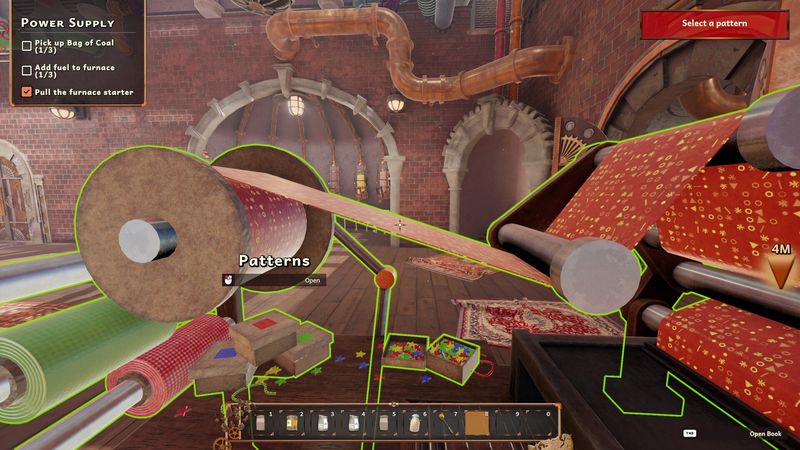
 Dialogue snippets drip with hints about “lost cocoa rivers,” foreshadowing possible expansions.
Dialogue snippets drip with hints about “lost cocoa rivers,” foreshadowing possible expansions.
 Best of all, the narrative never drags. With cutscenes under a minute, pacing stays intact for gameplay-focused players.
Best of all, the narrative never drags. With cutscenes under a minute, pacing stays intact for gameplay-focused players.
 Graphically, Unity’s URP pipeline gives sharp shadows and fluid gear animations. Even on mid-range PCs, the frame rate held at 60 fps without struggle.
Graphically, Unity’s URP pipeline gives sharp shadows and fluid gear animations. Even on mid-range PCs, the frame rate held at 60 fps without struggle.
 Colors also enhance immersion. Brass and wood tones establish a Bioshock Infinite-like style, only warmer and sweeter.
Colors also enhance immersion. Brass and wood tones establish a Bioshock Infinite-like style, only warmer and sweeter.
 Close inspection shows impressive detail: tiny logos etched into copper plates, lovingly crafted textures, and smooth moving parts.
Close inspection shows impressive detail: tiny logos etched into copper plates, lovingly crafted textures, and smooth moving parts.
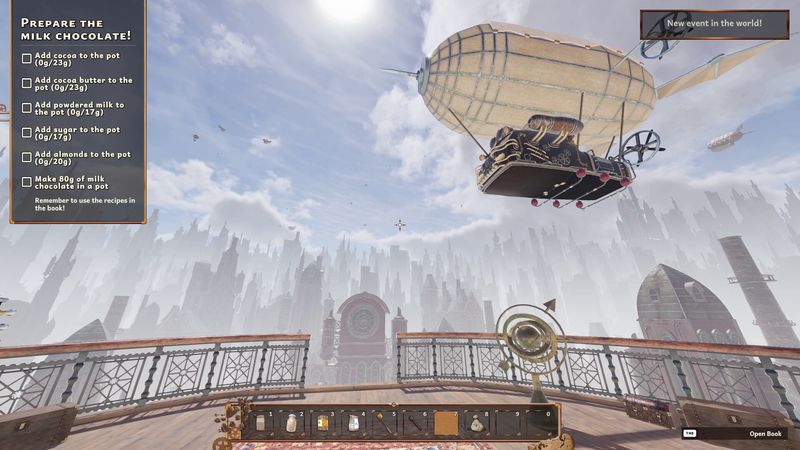
 Performance issues never distracted me. Because steam effects were optimized, draw costs remained low—ideal conditions for speedruns.
Performance issues never distracted me. Because steam effects were optimized, draw costs remained low—ideal conditions for speedruns.
 Sound design elevates the experience further. The soundtrack blends orchestral swells with mechanical percussion, with “Sugar Echoes” becoming my standout track.
Sound design elevates the experience further. The soundtrack blends orchestral swells with mechanical percussion, with “Sugar Echoes” becoming my standout track.
 Customization adds flair too. Through Steam mods, I swapped the score for a fan-made synthwave remix, which gave the factory a modern edge.
Customization adds flair too. Through Steam mods, I swapped the score for a fan-made synthwave remix, which gave the factory a modern edge.
 Subtle audio cues add gameplay value. Each machine click aligns with reward chimes, helping confirm recipes without watching closely.
Subtle audio cues add gameplay value. Each machine click aligns with reward chimes, helping confirm recipes without watching closely.
 For maximum focus, I muted nonessential sounds, though conveyor beeps stayed on—they served as vital timing guides.
For maximum focus, I muted nonessential sounds, though conveyor beeps stayed on—they served as vital timing guides.
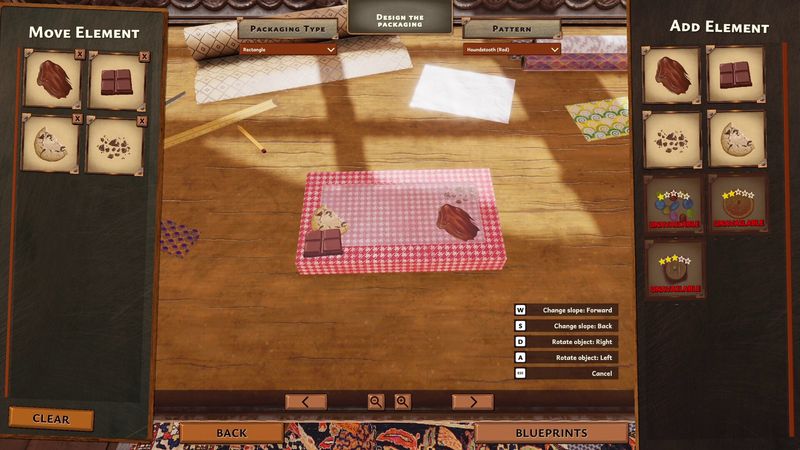
 Character depth appears primarily through Nougat, the automaton. Personality upgrades unlock taunts, dances, and quirky movements, making it feel increasingly alive.
Character depth appears primarily through Nougat, the automaton. Personality upgrades unlock taunts, dances, and quirky movements, making it feel increasingly alive.
 Customers also bring charm. A rare trader once requested cocoa with iris petals, leaving me with one of the most memorable orders.
Customers also bring charm. A rare trader once requested cocoa with iris petals, leaving me with one of the most memorable orders.
 In total, I’ve logged six distinct customer archetypes. Encouragingly, developers promised four more in future updates, ensuring variety won’t run out soon.
In total, I’ve logged six distinct customer archetypes. Encouragingly, developers promised four more in future updates, ensuring variety won’t run out soon.
 Difficulty scales alongside machine belts. At first, production is simple, yet advanced stages demand juggling six simultaneous bars.
Difficulty scales alongside machine belts. At first, production is simple, yet advanced stages demand juggling six simultaneous bars.
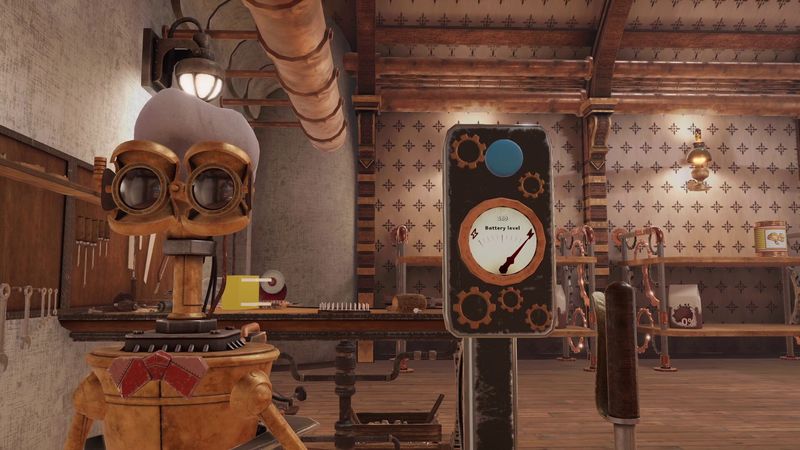
 Custom molds marked the sharpest spike for me. That mechanic forced quick adaptations, nearly resembling QTE-style sequences.
Custom molds marked the sharpest spike for me. That mechanic forced quick adaptations, nearly resembling QTE-style sequences.
 Reputation systems added stakes. Missing orders dropped my standing, proving precision matters.
Reputation systems added stakes. Missing orders dropped my standing, proving precision matters.
 Meanwhile, Order Chain Mode introduces endless runs, creating the ultimate test for stamina-focused players.
Meanwhile, Order Chain Mode introduces endless runs, creating the ultimate test for stamina-focused players.
 Replayability shines through layered goals. Hidden recipes gave me reasons to retry levels, and by my fourth playthrough, 80% of blueprints were unlocked.
Replayability shines through layered goals. Hidden recipes gave me reasons to retry levels, and by my fourth playthrough, 80% of blueprints were unlocked.
 Rerunning orders for rare customer events added unpredictability, tying neatly into the open-world feel.
Rerunning orders for rare customer events added unpredictability, tying neatly into the open-world feel.
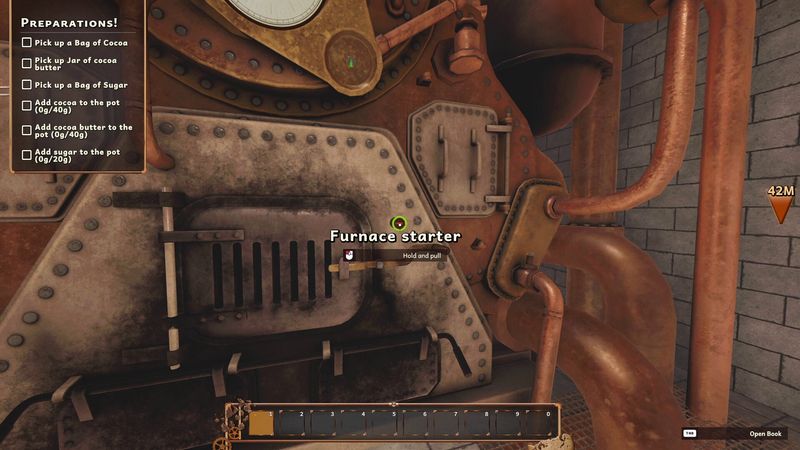
 Competitive players will enjoy chasing better times. Each run sliced seconds, and leaderboards—confirmed for a future patch—will push global competition.
Competitive players will enjoy chasing better times. Each run sliced seconds, and leaderboards—confirmed for a future patch—will push global competition.
 Overall, Chocolate Factory Simulator excels through tight controls and creative steampunk flair. By fusing open-world flexibility with workshop management, it appeals to explorers and trend-watchers.
Overall, Chocolate Factory Simulator excels through tight controls and creative steampunk flair. By fusing open-world flexibility with workshop management, it appeals to explorers and trend-watchers.
 It offers deep side content for completionists who chase every recipe and upgrade.
It offers deep side content for completionists who chase every recipe and upgrade.
 It gives speedrunners new toolsets. The time trials shine once you master the factory.
It gives speedrunners new toolsets. The time trials shine once you master the factory.
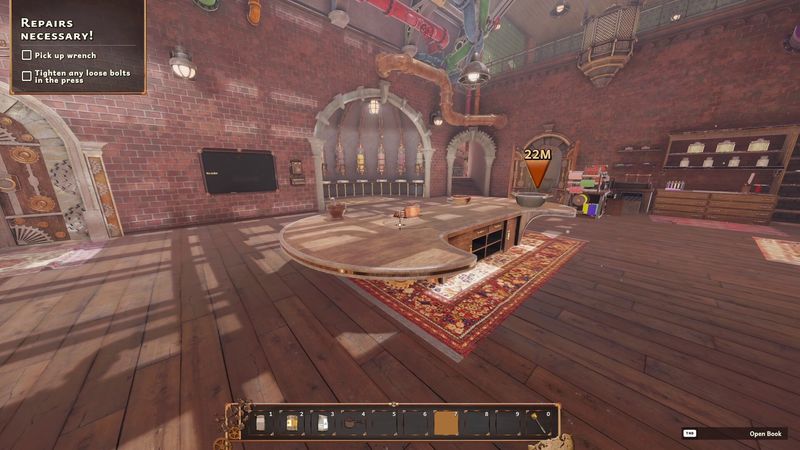
 If you enjoyed Chocolate Factory Simulator, you’ll likely love similar titles that blend creativity, strategy, and fast-paced fun. Satisfactory and Factorio deliver deep factory-building and automation challenges, while Overcooked! 2 adds chaotic multiplayer cooking for fans of teamwork and multitasking. For something quirky, Little Inferno lets you experiment with playful physics in a cozy fireplace. Meanwhile, Cook, Serve, Delicious! 3?! ramps up the intensity with food truck orders on the road, testing speed, memory, and efficiency.
If you enjoyed Chocolate Factory Simulator, you’ll likely love similar titles that blend creativity, strategy, and fast-paced fun. Satisfactory and Factorio deliver deep factory-building and automation challenges, while Overcooked! 2 adds chaotic multiplayer cooking for fans of teamwork and multitasking. For something quirky, Little Inferno lets you experiment with playful physics in a cozy fireplace. Meanwhile, Cook, Serve, Delicious! 3?! ramps up the intensity with food truck orders on the road, testing speed, memory, and efficiency.
